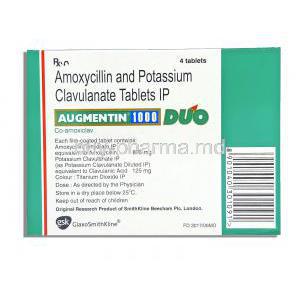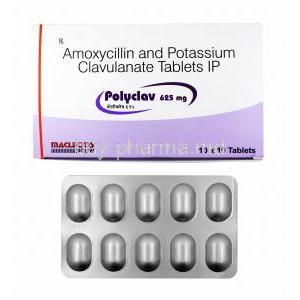Azid, Azithromycin
- Introduction
- Composition
- How it Works
- Uses
- Off-Label Use
- Dosage and Administration
- Side Effects
- Common Side Effects
- Important Precautions
- Interaction
- Warning
- Contraindication
- Careful Administration
- Administration to Elderly
- Administration to Pregnant Women and Nursing Mothers
- Administration to Children
- Overdose
- Storage
- Handling Precautions
Introduction
A groundbreaking discovery in the field of medications Azithromycin, commonly known as Azid represents a significant advancement in the fight against bacterial infections. This remarkable drug belongs to a group of antibiotics called macrolides, known for their effectiveness in treating various bacterial diseases.
The importance of antibiotics in healthcare cannot be emphasized enough serving as a vital defense against infections that were once fatal. The origins of Azithromycin can be traced back to the 20th century marking a pivotal moment in the development of antibiotics due, to its increased potency and fewer side effects compared to earlier versions.
Composition
- Active Ingredients and Their Functions; The way Azithromycin works is through its key component, which blocks the production of bacterial proteins thus halting the growth and spread of bacteria. This active element is effective against a range of bacteria making it an essential tool in the field of medicine.
- Inactive Components and Their Roles; Supporting the ingredient are various non active elements that have crucial roles in maintaining the formulations stability ensuring proper absorption, in the body and enhancing patient tolerance. These elements include fillers, binders and coating agents carefully chosen to boost the medication's effectiveness.
How it Works
Azithromycin works in a way by attaching itself to the 50S ribosomal subunit in bacterial cells. This process hinders the production of proteins needed for bacterial survival and growth. Its method differs from antibiotics like penicillin or cephalosporin which focus on attacking the bacterial cell wall.

Bacterial Cell Structure
These variations in function give Azithromycin a role in treating infections especially those that are resistant to other antibiotics. Additionally, careful management of its usage in medicine aims to reduce the risk of bacteria developing resistance an issue in fighting infectious diseases. With use and ongoing research, Azithromycin remains an effective tool, against bacterial infections showcasing the innovation and creativity seen in modern medical practices.
Uses
Azithromycin, a component in treating bacterial infections is known for its effectiveness against different types of infections(1). Apart, from killing bacteria it is also used to prevent specific noninfectious conditions demonstrating its versatility as a treatment option.
1. NCBI - Azithromycin in viral infections
Treating Bacterial Infections: Scope and Spectrum
Azithromycin is widely used to treat bacterial infections targeting both Gram-positive and Gram-negative bacteria.(1) This versatile antibiotic is highly effective against a range of pathogens that commonly cause respiratory, skin, soft tissue, and genitourinary infections(2). Its capacity to penetrate cells enables it to effectively fight pathogens making it a strong contender, against a diverse range of bacterial foes.
1. Science Direct - Azithromycin
2. National Library of Medicine - Azithromycin and clarithromycin: overview and comparison with erythromycin
Respiratory Tract Infections: Types and Treatment
Respiratory infections(1), including conditions like Pharyngitis (2) and pneumonia(3), are a key area where Azithromycin shows significant treatment advantages. Its unique pharmacokinetic features, such as a lasting presence in the body and deep tissue penetration ensure that the medication effectively reaches the infection site. Azithromycin is commonly used to treat respiratory infections, such, as acute bacterial flare-ups of chronic bronchitis community-acquired pneumonia, and throat infections caused by Streptococcus pyogenes.

Pneumonia
2. Mayo Clinic - Azithromycin
3. PubMed - Treatment of atypical pneumonia with azithromycin: comparison of a 5-day and a 3-day course
Skin and Soft Tissue Infections: Management Strategies
Azithromycin is commonly used to treat skin and soft tissue infections helping to combat issues like cellulitis, impetigo, and infected dermatitis. Its use in this area is supported by its effectiveness, in targeting the bacteria causing these infections giving an edge in the treatment plan. The approach involves utilizing Azithromycin characteristics to reach levels at the infection site ensuring successful resolution of the condition.
Genitourinary Infections and Their Resolution
Azithromycin's effectiveness in treating genitourinary infections, including sexually transmitted diseases like Chlamydia and gonorrhea is widely known. Its simple one-time dosage for infections highlights its ability to improve patient adherence a key aspect, in effectively treating such infections. This treatment method not only helps eliminate the disease-causing agent but also reduces the chances of spreading the infection, which aids in public health initiatives aimed at managing sexually transmitted diseases.
Preventative Uses in Non-Infectious Conditions
Azithromycin is not only used for its antimicrobial properties but also serves a purpose in preventing exacerbations in chronic conditions like chronic obstructive pulmonary disease (COPD) and reducing infection rates in high-risk groups. Its ability to reduce inflammation plays a role in its effectiveness in slowing down disease progression and enhancing the well-being of patients, with long-term illnesses. The diverse ways Azithromycin is utilized in medicine showcase its versatility beyond just being an antimicrobial drug.
Off-Label Use
Azithromycin's versatility goes beyond its ability to fight off microbes as it also has other uses that tap into its anti-inflammatory abilities. These additional applications showcase the drug's potential in treating ailments that are not solely caused by infections. Such uses not only demonstrate the drug's multiple functions but also emphasize the creative strategies, in modern medical treatments.
Anti-inflammatory Properties and Their Applications
Azithromycin's ability to reduce inflammation has proven valuable in treating term inflammatory illnesses. By adjusting the body's response it lowers cytokine levels and eases inflammatory reactions.
This function is especially helpful in diseases, like obstructive pulmonary disease (COPD) where it lessens flare-ups and asthma providing relief from symptoms and reducing the occurrence of asthma attacks.
Using Azithromycin strategically in these situations offers a method to handle persistent inflammatory conditions ultimately improving the well-being of those affected.
Role in Cystic Fibrosis Management
In the world of fibrosis, Azithromycin plays a crucial role in reducing the excessive inflammation that is common in this disease. By including it in the treatment plan for fibrosis patients there has been a noticeable improvement in lung function fewer instances of lung issues and an overall better health status, for the patients. This use of the medication shows how it goes beyond its antibacterial purpose giving optimism and better results to those facing this difficult condition.
Potential in Treating Gastroparesis
Azithromycin's usefulness extends to the realm of the system, where its potential in treating gastroparesis has been investigated. Gastroparesis, a condition characterized by delayed stomach emptying without blockage presents significant challenges for treatment. The prokinetic effects of Azithromycin have shown promise in enhancing stomach movement providing relief from symptoms for individuals. This unconventional use although not universally supported demonstrates the application of existing medications to address unmet medical needs, an important aspect of progress, in pharmacology.
Dosage and Administration
The effectiveness of Azithromycin depends on following the dosage instructions, which are customized for the specific ailment being addressed. Additionally taking into account patient groups and how the medication is given is crucial to guarantee both the drug's efficacy and the safety of the individual.
Standard Dosage Guidelines for Different Conditions
The appropriate amount of Azithromycin to take depends on the type and seriousness of the infection. For example, in cases of tract infections, it's common to start with a higher dose initially and then switch to lower doses in the following days. When treating transmitted infections a single larger dose is usually recommended for better effectiveness and patient adherence. These recommendations highlight the importance of adjusting the dosage according to individual treatment needs and having healthcare professionals oversee the treatment plan.
Adjustments for Specific Populations
It's important to make dosage changes for Azithromycin based on groups like kids, older adults, and people with kidney or liver issues. For instance, adjusting doses may be needed for patients or those, with major liver problems to reduce possible side effects and improve treatment results. These precautions help ensure that Azithromycin is used safely among types of patients.
Administration Techniques and Best Practices
To maximize the absorption and effectiveness of Azithromycin it is important to follow recommended practices during administration. While the drug can be consumed with or without food certain variations may come with instructions to improve its efficacy. Adhering to these guidelines helps achieve the therapeutic outcome, with Azithromycin.
Side Effects
Even though Azithromycin is usually well received it's important to be mindful of its side effects, for proper handling and timely action.
Overview of Common and Rare Side Effects
Azithromycin often leads to issues, allergies, and occasionally neurological symptoms. Although most side effects are minor and temporary there can be severe reactions that require immediate medical care. It's crucial to stay alert and keep in touch, with healthcare professionals to handle these risks effectively.
Managing Side Effects and When to Seek Help
Treating side effects typically includes providing relief for symptoms and if needed, making changes, to or stopping the medication. Patients should be advised to consult a healthcare provider if they encounter long-lasting symptoms that could point to a more significant underlying problem.
Common Side Effects
Gastrointestinal Disturbances: Symptoms and Management
Common gastrointestinal problems like queasiness throwing up and loose stools are some of the side effects. Making changes, to your diet and using prescription treatments could help ease these symptoms. If you experience severe gastrointestinal issues it's important to seek medical advice.
Allergic Reactions: Identification and Action
Allergies to Azithromycin are uncommon. This should be promptly addressed by a healthcare provider. Signs may vary from skin irritations to serious responses, like anaphylaxis. Early detection and stopping the medication are vital.
Neurological Effects: Prevalence and Prevention
Patients may experience side effects, like dizziness and headaches which could impact tasks that need alertness like driving. If these symptoms continue or get worse it might be necessary to review the medication plan.

Dizziness
Important Precautions
To use Azithromycin wisely it's crucial to grasp its potential risks in order to prevent any negative outcomes. Conducting an evaluation of drug interactions and existing medical conditions is fundamental, for ensuring safe usage.
Understanding Risk Factors and Avoiding Adverse Effects
Identifying and addressing risk factors is crucial in reducing the negative impacts of Azithromycin. It's important to assess patients for any past allergic reactions to macrolides or ketolides. Moreover being cautious about QT prolongation is essential for patients, with heart conditions or those using medications that can impact the QT interval.
Drug Interactions: Common Concerns and How to Manage Them
Azithromycin can have interactions with medications, which could result in important clinical outcomes. It's important to note that antacids containing magnesium or aluminum might slow down the absorption of Azithromycin and should be taken at least 2 hours apart. People using Warfarin may need to be monitored for any changes in time or INR levels. Proper management includes reviewing medications and if needed, making adjustments, to dosages or considering alternative treatments.
Pre-existing Conditions and Azithromycin Use
People who have existing conditions like liver problems, kidney issues, or irregular heart rhythms need to be evaluated before starting treatment with Azithromycin. It may be necessary to make changes, to the dosage or monitor them closely to prevent any worsening of these conditions.
Interaction
Drug-Drug Interactions: Compounds to Avoid
Using Azithromycin with specific medications can lead to negative interactions between drugs. It is important to be cautious, with drugs that extend the QT interval or are processed by the P450 enzyme system as they may require different treatments or close supervision.
Drug-Food Interactions: Dietary Considerations
Azithromycin can be consumed with or without meals. It is recommended to consider your diet as it could improve its effectiveness or lessen any reactions. For example, it may be wise to limit caffeine intake to avoid effects, like a heightened heart rate or palpitations.
Impact on Diagnostic Tests
When taking Azithromycin it's important to let your healthcare provider know before getting any lab tests done as it could affect the results of diagnostic tests. For instance, this medication might impact tests for infections, which could result in inaccurate negative outcomes.
Warning
Signs of Serious Adverse Reactions
Patients must stay alert for any side effects while undergoing Azithromycin treatment. Warning signs like yellowing of the skin intense stomach pain or breathing difficulties require medical intervention. Moreover, indications of a response such as skin rashes, facial or throat swelling and breathing issues signal a need, for urgent medical care.
When to Discontinue Use Immediately
It is crucial to stop taking Azithromycin in situations. These may involve experiencing skin reactions such, as Stevens Johnson syndrome showing signs of liver issues or any indications of anaphylaxis. It is essential to discontinue the medication and seek urgent medical advice to avoid additional problems.
Contraindication
Recognizing contraindications is crucial, for giving Azithromycin as it specifies situations where the medication should be avoided or used carefully. Knowing these guidelines helps prevent effects and enhances patient well being.
Absolute Contraindications for Use
Patients should avoid taking Azithromycin if they have shown reactions to Azithromycin, macrolide antibiotics, or ketolide antibiotics in the past. Allergic reactions to these medications can pose risks, including life-threatening outcomes. Therefore it is crucial for healthcare providers to thoroughly examine a patient's history to detect any previous adverse responses, to these drugs.
Conditions That Require Caution
Although not strictly prohibited it is important to use Azithromycin in certain situations; Individuals with a past record of QT prolongation or heart conditions are at risk of developing arrhythmias. Patients with liver or kidney issues may require dosage adjustments due to changes in drug processing and elimination. Before prescribing Azithromycin in these cases a careful assessment of the balance, between risks and benefits is crucial.
Careful Administration
Guidelines for Elderly Patients
When older patients visit they usually have health issues and take many medications. This means doctors need to be extra cautious when prescribing Azithromycin. The risk of interactions between drugs and the changes in how the body processes medications due, to aging highlights the importance of dosing and close monitoring.
Adjustments for Patients with Liver or Kidney Impairment
Considering how Azithromycin is metabolized and eliminated in the body individuals, with liver or kidney issues may need customized dosage plans to avoid drug buildup and harm. Adjusting dosages or spacing out doses more can be necessary based on the severity of the impairment.
Administration to Elderly
Dose Adjustments Based on Age and Health Status
Elderly individuals may require dosage modifications based on their health condition, such, as kidney and liver function. It is important to follow the approach of starting with doses and gradually increasing to reduce the chances of negative reactions.
Monitoring and Managing Age-Related Risks
It is essential to keep an eye on older patients for potential risks linked to azithromycin like heart rhythm abnormalities and how it may interact with other medicines. By checking how well the treatment is working and watching out for any negative effects we can adjust the treatment plan as needed to ensure that azithromycin is used safely in this group. Taking steps to manage risks associated with aging helps ensure that the advantages of treatment are greater than any possible dangers.
Administration to Pregnant Women and Nursing Mothers
When using Azithromycin during pregnancy and breastfeeding it's crucial to have an understanding of its safety aspects based on the latest research and advice. This helps in protecting the health of both the mother and the baby while meeting the requirement, for therapy.
Safety Profile During Pregnancy and Lactation
Azithromycin falls into FDA Pregnancy Category B, which means that while animal studies haven't shown any risk to the fetus there is a lack of research on pregnant women. Even though Azithromycin is present in breast milk the levels are much lower than in the blood indicating a risk, to nursing babies. However, it's essential for healthcare providers to thoroughly evaluate the benefits and risks before prescribing Azithromycin to pregnant or breastfeeding women.
Research Findings and Recommendations
Recent studies suggest that Azithromycin could be beneficial in situations for pregnant and breastfeeding women especially when the benefits outweigh the risks. It's important for healthcare professionals to stay updated on the current recommendations and research findings to make well-informed choices about its usage, in these groups.
Administration to Children
Pediatric Dosage and Safety Considerations
The amount of Azithromycin given to children depends on their weight. How severe the infection is. It has been proven safe and effective, for kids. Getting the right dose is crucial to prevent giving too little or too much which could impact how well the treatment works or raise the chance of side effects.
Age-Specific Concerns and Efficacy
It's important to take into account the needs of different age groups, especially newborns and young children because their organs and metabolism are still developing. Children may respond differently to medication in terms of how it's absorbed, distributed, metabolized, and excreted. This means that dosage adjustments or changes, in how the medication is given may be needed to ensure it works effectively.
Overdose
Signs and Symptoms of Overdosage
Signs of taking too much Azithromycin can consist of nausea throwing up diarrhea and a temporary loss of hearing. Identifying these signs promptly can help with intervention and treatment.
Immediate Actions and Treatment Options
In case of an overdose providing care is essential. Treatment focuses on managing symptoms and ensuring the stays hydrated. In situations of an overdose healthcare providers may consider performing stomach pumping or giving activated charcoal within an hour of ingestion.
Storage
Optimal Storage Conditions to Preserve Efficacy
Azithromycin needs to be kept in a dry place at room temperature shielded from light and moisture to maintain its effectiveness. It is crucial to store it to ensure the medication remains potent and effective, for treatment.
Shelf Life and Disposal Recommendations
The duration that Azithromycin remains effective depends on how it's formulated and packaged. It's important for individuals to pay attention to the expiration dates and correctly dispose of any medication that has expired or is no longer needed in line, with guidelines to prevent environmental pollution.
Handling Precautions
Safe Handling and Administration Practices
Healthcare providers need to follow procedures, for safely handling and giving Azithromycin to reduce the chances of contamination and ensure the safety of patients. This involves checking patient details, medication dosages, and expiry dates before administering the drug.
Avoiding Contamination and Ensuring Patient Safety
It's really important to avoid any contamination when dealing with and giving Azithromycin. Things, like wearing gloves not touching the bottle or the medicine with your hands, and making sure everything is done in a clean place help keep it safe and protect the health of patients.



















